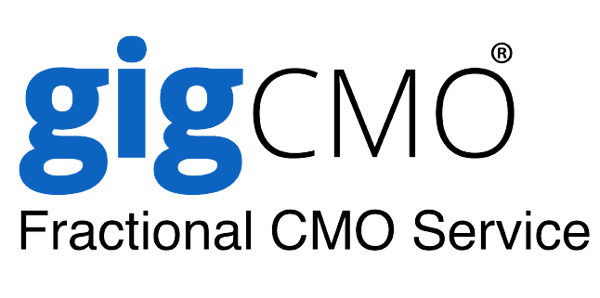Building Marketing and Sales Capabilities to Beat the Market

Effective modern marketing has always been integral to brand recognition and business growth, but many businesses still need to find the right strategy. The development and execution of efficient marketing strategies are crucial in the business market sector, which must succeed in establishing marketing capabilities that support the business market's plans. The target market frequently includes a wide range of products, and marketing and strategic capabilities are designed for it.
The goal is not merely to keep up with the market but to outperform it, setting the pace and leading the way. In this article, we delve into the strategic importance of building and enhancing marketing and sales capabilities to gain a competitive edge and ultimately beat the market.
Understanding the Evolution of Marketing
Marketing 1.0: The Production Era
The Industrial Revolution laid the groundwork for modern marketing. All of the necessary ingredients were gathered, resulting in marketing as we know it today: the promotion of mass-produced consumer goods.
As a result, early marketing efforts were focused on production. Customers, according to the working premise, just needed to be informed about the products that were accessible to them. You can't buy something if you don't know it exists.
A quote from Henry Ford best describes this strategy. "If you really have a good thing, it will advertise itself." The company's approach was text-heavy and information-heavy, emphasising pricing, quality, and consistency.
Marketing 2.0: The Selling Era
If you're the only business in town, leveraging a production orientation is acceptable. However, from the 1930s onward, it became increasingly difficult for any business to maintain a competitor-free environment.
As a result of the tensions of natural selection, businesses acquired distinctive adaptations. This resulted in two key advances in modern marketing: the essential importance of brand identities and an emphasis on the selling orientation.
Indeed, this marketing stage helps us understand how Coca-Cola is excellent in building itself far beyond its functional offers. The corporation focused on increasing sales by associating its brand with Santa Claus because a production-oriented approach, such as Henry Ford's, would have resulted in less advertising during the winter months. Marketers had to create a consumer-friendly picture of Santa to make it work.
Marketing 3.0: The Marketing Era
The evolution of a marketing orientation signified a significant shift. Unlike traditional marketing, which focused solely on getting things to customers and encouraging them to buy, this new strategy was unique. Businesses were motivated to better understand their customers' demands, concerns, and wants. Only then can businesses hope to have a lasting impact.
Many internal stakeholders were sceptical of Apple's 1984 Super Bowl commercial announcing the launch of the Macintosh personal computer. The entire campaign is based on the idea that a new world is possible by taking a different approach to technology adoption – one that places individual customers, instead of large corporations, firmly at the centre.
Marketing 4.0: The Digital Era
Many businesses today use a focused on-relationships approach to marketing. A strategy that prioritises the shifting customer demand to reach more customers and engage with them fully.
The digital era has altered many traditional marketing tactics, such as segmentation, targeting, and positioning. Customer re-engagement incentives are easily delivered through digital marketing platforms, and social media campaigns make brands more accessible. As brands aspire to be viewed as partners in the customer's goal to create a more equal society, social responsibility may also be a cornerstone of this perspective.
What Causes Marketing to Evolve?
Marketing evolves due to a combination of various factors and influences in the business environment. These changes are driven by a dynamic interplay of technological advancements, shifts in consumer behaviour, competitive pressures, and regulatory developments. Here are some key factors that cause marketing to evolve:
Technological Advancements:
The rapid pace of technological innovation plays a significant role in shaping the marketing landscape. New digital tools, platforms, and channels constantly emerge, enabling marketers to reach and engage with their target audiences in novel ways. For example, the rise of social
Changing Consumer Behaviour:
Consumer preferences and behaviours are continually evolving. Consumers' expectations for personalised and immersive marketing experiences increase as they become more digitally savvy and empowered. Marketers must adapt their strategies to meet these changing demands and deliver relevant content to their audiences.
Globalisation:
The global nature of modern business means that companies often market to diverse international audiences. This requires marketers to consider cultural nuances, language differences, and regional preferences, leading to the development of more tailored and culturally sensitive marketing campaigns.
Competitive Landscape:
Competition in the marketplace drives innovation and evolution in marketing. Businesses must continually refine their marketing strategies to gain a competitive edge, identify unique selling points, and differentiate themselves from rivals. This can result in the adoption of new marketing techniques and approaches.
Economic Conditions:
Economic fluctuations and market conditions can influence marketing budgets and strategies. During economic downturns, companies may focus on cost-effective marketing tactics, while in times of growth, they may invest more heavily in branding and expansion efforts.
Environmental and Social Responsibility:
Increasing awareness of environmental and social issues has led to a growing emphasis on sustainability and corporate social responsibility in marketing. Brands that align with socially responsible values and initiatives often resonate better with consumers, leading to shmarketing messaging and campaign shifts
Marketing Capabilities Framework Today
The Marketing Capabilities Framework is a structured approach to assess and improve a company's marketing abilities. It provides a common language for business and technology alignment. The framework can help companies assess their people, processes, technology, and operations at an elemental level and derive a target state based on bridging capability gaps.
According to McKinsey, the new marketing superpower is multidisciplinary competency across six core capabilities.
1. Customer Centricity: Focusing on creating a positive customer experience at every touchpoint with the brand.
2. Full-Funnel Marketing: Guiding the customer's journey from awareness and consideration to purchase and loyalty.
3. Agile Operating Model: Being able to respond to market or customer behaviour changes quickly.
4. Multichannel Excellence: Providing a seamless customer experience across all channels.
5. Measurement: Understanding the effectiveness of marketing activities.
6. Customer Data and Marketing Technology: Leveraging data and technology to understand customer behaviour and personalise marketing efforts
How to Assess, Structure and Develop Your Marketing Capabilities
Capabilities are widely described as the processes and routines that a business employs to convert its resources into valued outputs. Marketing capabilities are critical in defining the relationship between businesses' marketing activities and their long-term performance. Indeed, business-to-business (B2B) companies with more advanced marketing capabilities have 30% higher revenue growth than the average business in their industry.
Assessing Marketing Capability Maturity
Businesses need to assess, organise, and enhance their marketing capabilities per their goals and vision to develop resilience and adaptability to future changes. This can be achieved through a three-step approach:
Understand Required Capabilities
Determine the capabilities necessary to fulfil the marketing vision and evaluate their performance. This can be accomplished by conducting a capability assessment that includes all aspects of the existing marketing operating model (people, processes, and technology) supplemented with data and analytics.
Align Capabilities Across Business Departments
Examine how the organisation's capabilities are distributed across different business departments. This can be done by assessing and redesigning the business architecture and service model, which may involve evaluating in-house and/or outsourced capabilities. Furthermore, a framework for roles and responsibilities can be used to structure future capabilities.
Identify and Prioritise Skills and Culture Development
Identify and prioritise the skills and culture that need to be developed in line with the marketing vision and market demands. This can be achieved through digital training (basic and advanced digital training), a change management programme, and job descriptions for hiring profiles that are currently not available within the organisation.
Building Marketing and Sales Capabilities to Beat the Market
Imagine you're building a world-class football team from scratch. What steps would you take to ensure success? You'd establish a top-notch academy to nurture talent, carefully select the best players, design a winning strategy tailored to their strengths, and provide extensive training. Additionally, you'd invest in comprehensive statistics analysis to learn from both triumphs and setbacks.
Now, when it comes to forming an exceptional global marketing team, why not adopt a similar approach? The concept of a gigCMO Playbook: think of it as your marketing capabilities programme. This playbook outlines the strategies and processes necessary to assemble a high-performing marketing team that can drive your business to victory in the global market. Just as in football, it all starts with a well-thought-out game plan.
At gigCMO, we have helped many clients create marketing capability strategies. Here are seven key steps to develop marketing and sales capabilities that can beat the market:
Define Your Goals and Objectives
Begin by clearly defining your business goals and objectives. Determine what you want to achieve through marketing and sales efforts. Are you looking to increase market share, enter new markets, or boost revenue?
Assess Your Current Capabilities
Evaluate your existing marketing and sales resources, including personnel, technology, and processes. Identify strengths and weaknesses within your current team and operations.
Build the Right Team
Just as in football, selecting the right players is crucial. Hire marketing and sales professionals with the skills, experience, and mindset that align with your objectives. Consider creating cross-functional teams with diverse expertise.
Develop a Strategic Plan
Craft a comprehensive marketing and sales strategy tailored to your business goals. This should include market research, target audience analysis, competitive analysis, and a clear value proposition. Define your unique selling points (USPs).
Implement Technology and Tools
Invest in the necessary technology to support your marketing and sales efforts. This includes CRM software, analytics platforms, marketing automation tools, and customer data management systems.
Training and Development
Develop a training programme to upskill your team continuously. Provide access to industry-specific training, workshops, and resources to keep your marketing and sales professionals updated with the latest trends and best practices.
Measure and Iterate
Implement comprehensive analytics and reporting systems to track the performance of your marketing and sales initiatives. Continuously monitor key performance indicators (KPIs) to assess the effectiveness of your strategies. Learn from successes and failures, and adjust your tactics accordingly.
The Essential Questions for Transforming Marketing and Sales Capabilities
Transforming marketing and sales capabilities to drive growth can be a challenging journey. Many businesses often struggle with where to begin. In our experience, CEOs and senior executives can kickstart this process in the right direction by asking the following three critical questions:
1. How do your current marketing and sales capabilities compare to best practices?
To chart a path towards success, it's crucial to assess where your marketing and sales capabilities stand today. Understanding the gap between your current state and industry best practices is the first step towards meaningful improvement.
2. What's the potential value in significantly enhancing your marketing and sales performance?
Recognise the immense value that lies in elevating your marketing and sales efforts. Enhanced performance drives revenue growth and can result in improved market competitiveness, customer satisfaction, and long-term business success.
3. What's the return on investment (ROI) for your existing capability investments?
Before making further investments, evaluate the effectiveness of your current capabilities. Understanding the ROI on your existing investments can guide decisions on where to allocate resources for maximum impact.
Starting with these essential questions ensures that your company's efforts are directed towards building capabilities that enhance financial performance and position your business to outperform competitors in the market.
Take the first step towards transforming your marketing and sales capabilities for growth. Contact us to discuss how we can help you navigate this journey and achieve your business objectives.
